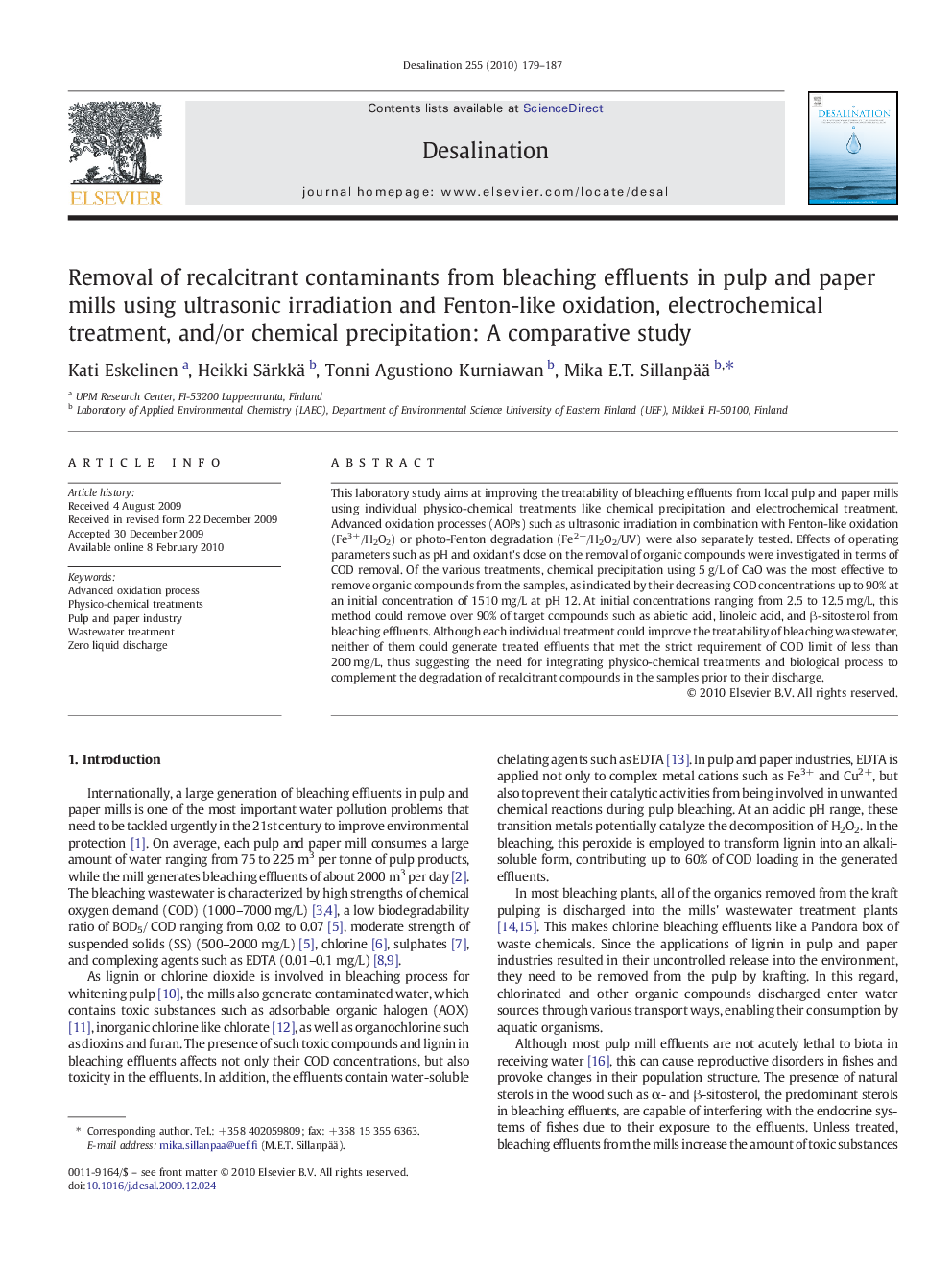| Article ID | Journal | Published Year | Pages | File Type |
|---|---|---|---|---|
| 625874 | Desalination | 2010 | 9 Pages |
This laboratory study aims at improving the treatability of bleaching effluents from local pulp and paper mills using individual physico-chemical treatments like chemical precipitation and electrochemical treatment. Advanced oxidation processes (AOPs) such as ultrasonic irradiation in combination with Fenton-like oxidation (Fe3+/H2O2) or photo-Fenton degradation (Fe2+/H2O2/UV) were also separately tested. Effects of operating parameters such as pH and oxidant's dose on the removal of organic compounds were investigated in terms of COD removal. Of the various treatments, chemical precipitation using 5 g/L of CaO was the most effective to remove organic compounds from the samples, as indicated by their decreasing COD concentrations up to 90% at an initial concentration of 1510 mg/L at pH 12. At initial concentrations ranging from 2.5 to 12.5 mg/L, this method could remove over 90% of target compounds such as abietic acid, linoleic acid, and β-sitosterol from bleaching effluents. Although each individual treatment could improve the treatability of bleaching wastewater, neither of them could generate treated effluents that met the strict requirement of COD limit of less than 200 mg/L, thus suggesting the need for integrating physico-chemical treatments and biological process to complement the degradation of recalcitrant compounds in the samples prior to their discharge.
